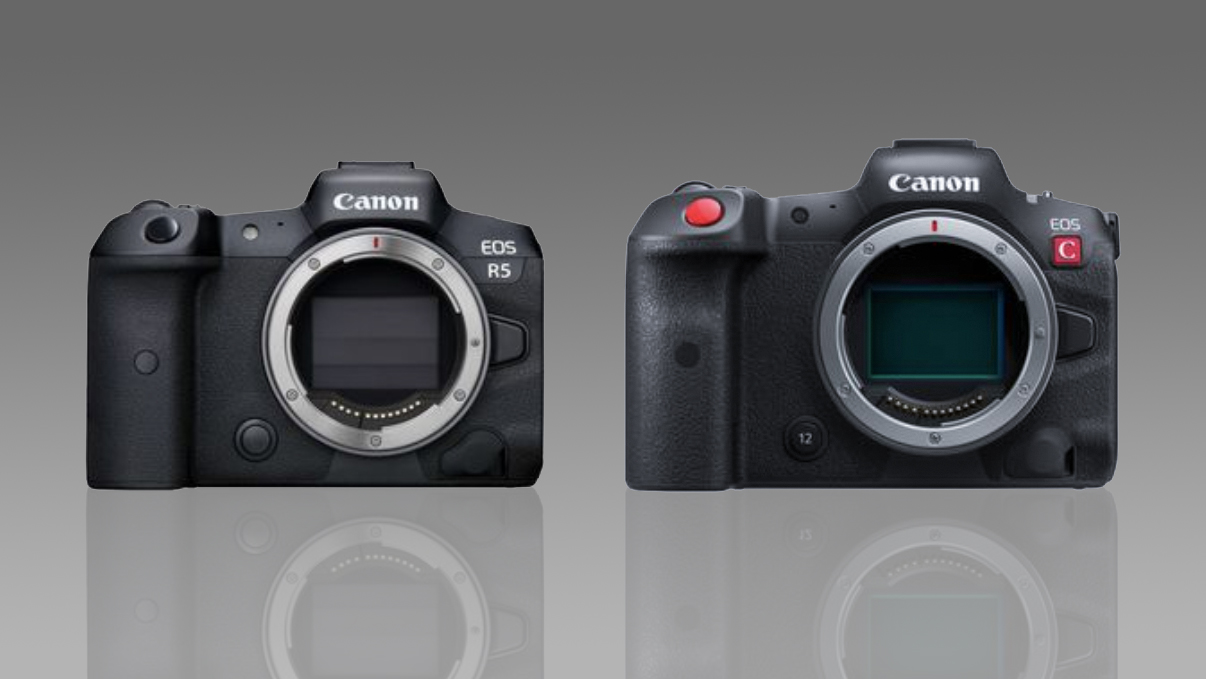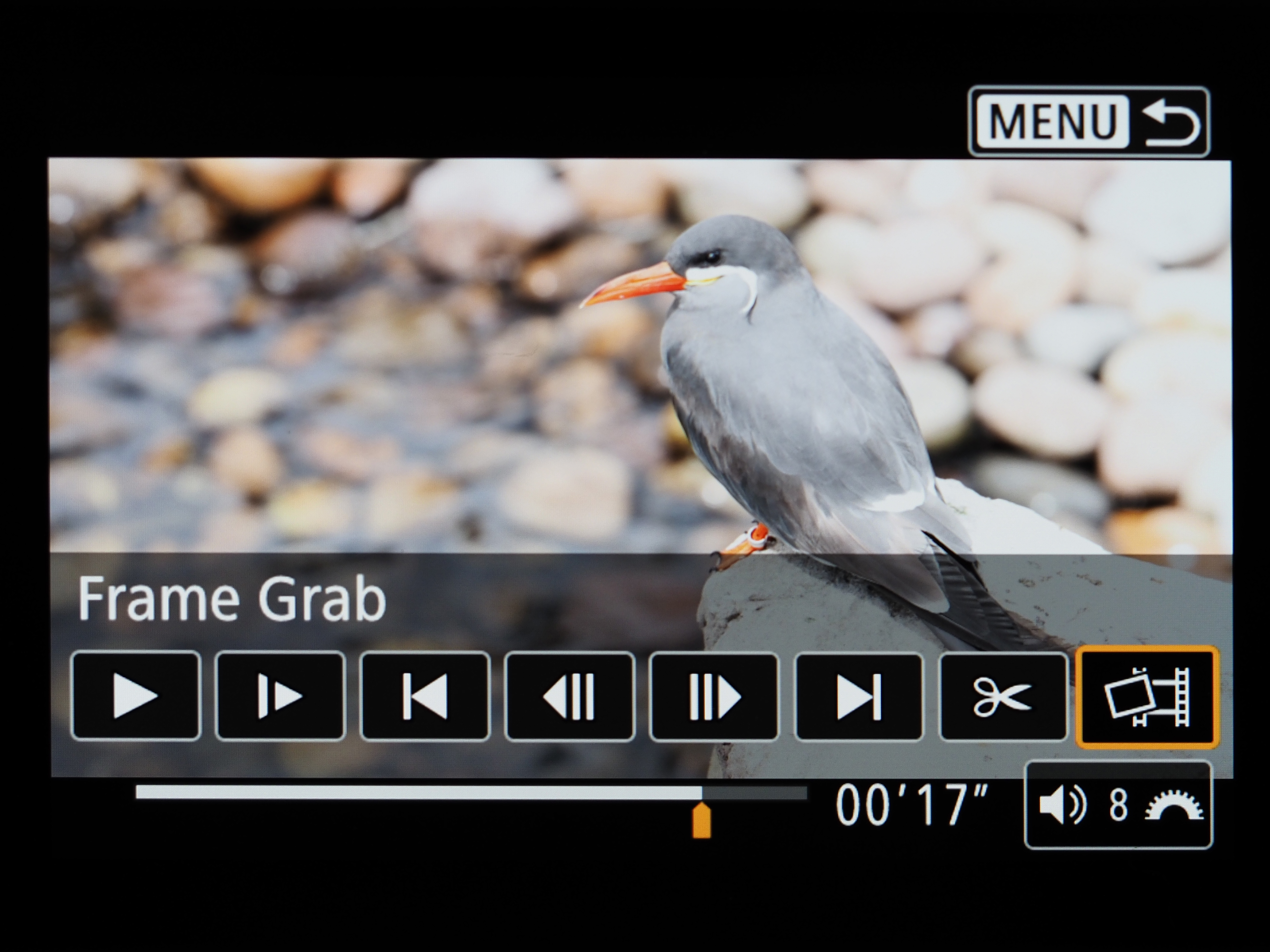Canon EOS R5 vs R5 C: What are the differences and which 8K camera is best?
It's the battle of Canon's 8K juggernauts! Canon EOS R5 vs R5 C – which of these 8K, 45MP cameras is right for you?

More than most camera comparisons, the Canon EOS R5 vs R5 C question is one of the trickiest to get your head around.
This is because the Canon EOS R5 and Canon EOS R5 C are, technologically, almost identical – but there are some profound differences in their operation and performance, which have a huge impact on which of these powerhouses are right for you.
They both hold their own among the best 8K cameras, and they are two of the best Canon cameras that the manufacturer has ever produced. However, the R5 C is vying specifically for the crown of best cinema camera – because unlike the regular R5, it is a Cinema EOS product.
So, let's see how the two cameras compare in every category, so you can work out which is the right R5 for you.
Canon EOS R5 vs R5 C: specifications
| Header Cell - Column 0 | Canon EOS R5 | Canon EOS R5 C |
|---|---|---|
| Sensor | 45MP full-frame CMOS | 45MP full-frame CMOS |
| Processor | Digic X (2nd generation) | Digic X (3rd generation) |
| Autofocus system | Dual Pixel CMOS AF II | Photo: Dual Pixel CMOS AF II • Video: Dual Pixel CMOS AF with Eye AF and EOS iTR AF X |
| ISO range | Photo: 100-51,200 (exp to 50-102,400) • Video: 100-25,600 (exp to 51,200) | Photo: 100-51,200 (exp to 50-102,400) • Video: 100-25,600 (exp to 102,400) |
| Dual Base ISO | N/A | ISO800 / ISO3200 • ISO400 / ISO1600 • ISO160 / ISO640 |
| Dynamic range | 12 stops | 14 stops |
| In-body image stabilization | 5-axis, up to 8 stops | N/A |
| Electronic image stabilization | 5-axis | 5-axis |
| Max video res | 8K 30p | 8K 60p (with external power) |
| Proxy video | N/A | Yes |
| Viewfinder | 5,690k dots, 120fps refresh | 5,690k dots, 120fps refresh |
| LCD | 2,100k dots | 2,100k dots |
| Max burst | 12fps mechanical shutter, 20fps electronic shutter | 12fps mechanical shutter, 20fps electronic shutter |
| Size | 135.8 x 97.5 x 88mm | 142 x 101 x 111mm |
| Weight | 650g body only | 680g body only |
Canon EOS R5 vs R5 C: Sensor resolution

This one is almost a tie, since both cameras feature the exact same 45MP (effective, 47.1MP total) , full-frame, 3:2 ratio, 36 x 24mm CMOS image sensor with built-in low-pass filter.
However, the big difference between the two cameras is that the sensor in the R5 features in-body image stabilization (IBIS, good for up to 8 stops of compensation) while the sensor on the R5 C is fixed, and only features electronic stabilization (also offered by the base camera).
While serious videographers will always choose one of the best gimbals over IBIS, it can be a godsend when you don't have or can't use your rig. And of course, it is invaluable for shooting stills.
Winner: Canon EOS R5
Canon EOS R5 vs R5 C: Burst shooting
This one is a dead tie, as both cameras boast identical continuous shooting speed performance. The R5 and R5 C can achieve top burst speeds of 12 frames per second using the mechanical shutter, and a blistering 20 frames via the electronic shutter (full-resolution JPGs and RAWs).
It should be pointed out that this performance is dependent on the memory format used; the best CFexpress cards will enable you to achieve top speeds, while the slower SD format will throttle performance.
Winner: Draw
Canon EOS R5 vs R5 C: autofocus

This is where things start to get interesting, as it's a tale of two halves. The base Canon EOS R5 possesses the manufacturer's latest autofocus technology, Dual Pixel CMOS AF II – which enables face, eye, head and body tracking for humans, animals (namely birds, cats and dogs, though we have yet to find an animal that the camera won't recognize) as well as vehicle recognition.
Crucially, the R5 can perform these specific subject tracking actions in both stills and video mode, since it employs Dual Pixel AF II for both functions. In other words, you can track animals and vehicles when shooting video.
The Canon EOS R5 C, however, only makes use of Dual Pixel AF II when shooting stills; when filming video, it only employs the original Dual Pixel CMOS AF system – as do all current Cinema EOS System cameras (and remember that the R5 C is, specifically, a Cinema EOS product).
This means that, while you can track animals and vehicles when capturing photographs, when recording video you are limited to human eye, face, head and body tracking (thanks to EOS iTR AFX technology) – which gives it performance roughly on par with the flagship Canon EOS-1D X Mark III, but still a few steps below the base camera.
Winner: Canon EOS R5
Canon EOS R5 vs R5 C: ISO sensitivity
ISO sensitivity is one of the key and most significant differentiators between the two R5s – and as you might expect by this point, they revolve around the cameras' respective performance in the video arena.
In photographic terms, they share the same ISO100-51,200 sensitivity, which is expandable to ISO50-102,400.
When it comes to video, the first big difference comes in the core ISO range; where both cameras share the same ISO100-25,600 spread, the R5 can be expanded to ISO51,200 while the R5 C can achieve ISO102,400, There is something even more game-changing when it comes to video, though, and that's Dual Base ISO – debuting in a Canon product for the first time.
This works differently to the Dual Gain Output featured in cameras like the Canon EOS C70, which has fixed ISO sensitivities (an ISO800 base and Dual Gain from ISO160-25600), where the R5 C features different base ISOs depending on the chosen gamma settings (though Dual Base ISO is not available for stills). In real terms, this boosts the R5's claimed 12 stops of dynamic range to a claimed 14 stops.
Winner: Canon EOS R5 C
| Gamma settings | Dual Base ISO values |
|---|---|
| C-Log 3 / Raw | ISO800 • ISO3200 |
| BT.709 Wide / PQ / HLG | ISO400 • ISO1600 |
| BT.709 Standard / Normal | ISO160 • ISO640 |
Canon EOS R5 vs R5 C: video
This is a top-to-bottom case of "anything you can do, I can do better". With the sole exception of the lack of IBIS in the R5 C – which, again, is something that most videographers do not rely on anyway – the Cinema EOS camera ups all the stakes for capturing footage.
The Canon EOS R5 can capture full-width (uncropped) 8K Raw video using the entire readout of the 35mm sensor – and it does so internally at up to 30fps in 4:2:2 12-bit Canon Log or HDR PQ (both H.265) in both UHD and DCI. And, since 8K DCI video has a resolution of 8,192 x 4,320, the camera has a Frame Grab function that enables you to take high-resolution 35.4MP JPEGs from your footage.
Its 4K video capture is every bit as ferocious, recording at up to 120fps (in the same 4:2:2 Canon Log or HDR PQ, in UHD or DCI) with external HDMI recording up at up to 60fps. However, as has become quite infamous, the R5 is subject to overheating issues and recording limits – which means that you are limited to brief bursts of shooting 8K 30p, 4K HQ or 4K 120p, between which you must wait for the camera to cool down.

As a dedicated Cinema EOS product, though, the R5 C pushes things even further – primarily because it possess an active cooling system to prevent overheating (see below). It cannot shoot video in stills mode (or vice versa), so you will need to boot the camera up in video mode to capture moving images – and upon doing so, the familiar EOS menus are replaced by Cinema EOS menus.
Here you can unleash the camera's full video potential. New to the R5 C is the ability to shoot internal full-frame 8K video up to 60p in 12-bit Cinema Raw Light, optimized for HDR footage – though the camera must be connected to an external power source (including new Canon mains adapter, or a power bank) to shoot 8K 60p. Internally, it also shoots Super 35 up to 5.9K 60p and Super 16 up to 2.9K 60p.
In addition to 12-bit Raw, this new video format enables you to shoot configurations including Raw HQ, Raw ST, Raw LT, HDMI Raw, XF-AVC YCC 4:2:2 10-bit, MP4 / HEVC YCC 4:2:2 10-bit, MP4 / HPEC YCC 4:2:0 10-bit, and MP4 / H.264 YCC 4:2:0 8-bit.
Also new is the ability to capture 4K 120p – in DCI / UHD in 4:2:2 10-bit (Long GOP and Intra) – with audio recording, where the sound can be captured as a separate audio file, relieving the need to record audio independently. Proxy recording is also offered, which is not possible on the base R5.
Winner: Canon EOS R5 C
Canon EOS R5 vs R5 C: memory format
On a purely technical level there's nothing to see here, as both cameras use the same dual-card, split-format memory setup: one CFexpress Type B card slot and one SD / SDHC / SDXC UHS-II slot.
Of note, however (as mentioned above), is that proxy recording is only offered on the Canon EOS R5 C, and is not possible on the base R5.
Winner: Canon EOS R5 C
Canon EOS R5 vs R5 C: viewfinder, LCD and body
The electronic viewfinder (EVF) and rear LCD screen are identical between the two bodies, with an 0.5-inch OLED EVF featuring 5,690k dots, 100% coverage, 0.76x magnification and a maximum 120fps refresh rate. The LCD, meanwhile, is a 3.15-inch fully articulating (Vari-angle, to use official Canon parlance) touchscreen with 2,100k dots.
The physical size and form factor of the cameras is decidedly different, though. The Canon EOS R5 is a smaller, sleeker body at 138.5 x 97.5 x 88mm and 650g (738g with battery and cards), compared to the chunkier and heavier 142 x 101 x 111mm and 680g (770g).
The R5 C's bulkier body is to accommodate the new fan-assisted active cooling system, which aids heat dispersion in order to facilitate video capture that ostensibly has "no limitations on shooting" (according to Canon).
However, the cameras does in fact impose recording durations based on the format and settings you choose for your video, ranging from ½ hour to 30½ hours – you can find the full breakdown of recording times here.
Both cameras retain full weather-sealing, along with compatibility with add-ons like battery grips. While this category is somewhat subjective, as having a slightly smaller and lighter body might be more important to you, the fact that the R5 C can capture significantly more video (and shoot stills without impacting video recording recovery times) without overheating, the nod has to go to the cinema product.
Winner: Canon EOS R5 C

Canon EOS R5 vs R5 C: Winner
Canon EOS R5 – 3 points
Canon EOS R5 C – 5 points
On paper, the Canon EOS R5 C seems the superior system. However, it is only a clear winner in one respect: video. When it comes to stills, the clear winner is actually the original R5.
Both R5 models are designed for hybrid shooters; which one is "best" (or, rather, best for you) comes down to what you shoot. If you are primarily a photographer, who shoots video secondarily, then the R5 is the body for you. It possesses class-leading in-body image stabilization and, surprisingly, superior autofocus performance in video (incorporating animal and vehicle AF, which the R5C does not).
If, however, you are first and foremost a videographer who also shoots stills, then the R5 C is without question the camera for you. Its cooling system solves the R5's overheating issues, it can capture 8K all the way up to 60p (with external power) and it possesses Dual Base ISO for superior low light performance and 2 more stops of dynamic range.
In short, the R5 is a stills camera that can also shoot great video, while the R5 C is a cinema camera that can also shoot great stills.
How we test cameras
Why you can trust Digital Camera World
Read more:
Best Canon RF lenses
Best Canon lenses
Canon EOS R5 review
Read more:
Get the Digital Camera World Newsletter
The best camera deals, reviews, product advice, and unmissable photography news, direct to your inbox!

James has 22 years experience as a journalist, serving as editor of Digital Camera World for 6 of them. He started working in the photography industry in 2014, product testing and shooting ad campaigns for Olympus, as well as clients like Aston Martin Racing, Elinchrom and L'Oréal. An Olympus / OM System, Canon and Hasselblad shooter, he has a wealth of knowledge on cameras of all makes – and he loves instant cameras, too.
